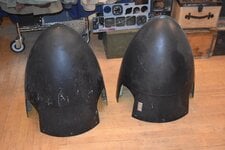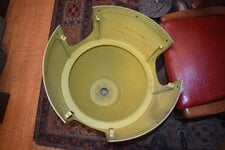- Thread starter
- #261
Crimea_River
Marshal
Speak of the devil! The hole cut out is 2-1/4 inches and the mount holes are 2-5/8 inches on the diameter.I may have one. Send me the ID of the hole if you don't mind. Also I have two airworthy prop spinners for a Mosquito,
We have both our Mosquito spinners so don't need any thanks.


